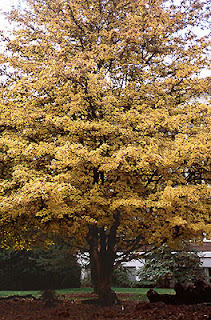By June most of our seeds have been
planted and are up and growing. And yet
there may still be bare areas in our garden.
Perhaps we are leaving room for tomatoes or peppers or squashes to
grow. Often we think that leaving room
means leaving bare soil, but naked earth is exactly what we do not want.
We grew up learning about the types of soil (sand, silt, loam and the clay we have around
here) in which we grow our plants and the chemicals in the earth that support plant
growth, particularly N-P-K (nitrogen, phosphorus, and potassium that we use to
feed our plants). We learned about
composting to improve our soil texture and chemistry, but until recently most
of us had not heard much about the biology of the soil, all the little
organisms eating and being eaten, pooping and reproducing in our dirt so that
it becomes living soil.
These little guys include -- but are not limited to -- bacteria, fungi,
protozoa, nematodes, and micro-arthropods as well as earthworms. We know that worms are signs of good soil,
but until recently scientists did not understand that they were part of a
complex soil food network that involves thousands of kinds of organisms. Worms are the part most of us can see without
a microscope, and they and the rest of the soil community are essential to the
life of our plants. Most of these soil
organisms live near the roots of our plants. “As they eat, grow,
and move through the soil, they make it possible to have cleaner water, cleaner
air, and healthier plants.
They decompose manure, dead plant material, and even pesticides,
preventing them from entering water and becoming pollutants. They sequester
nitrogen and other nutrients that might otherwise enter groundwater, and they
fix nitrogen from the atmosphere, making it and other nutrients available to our
plants.”2 Many of these little guys enhance soil texture, reducing
runoff, and they also prey on crop pests.
Because they thrive around the roots of our plants, where there is bare
ground, they die off.
So, what
do we do with bare soil that is waiting for our tomatoes, peppers, squashes and
pumpkins to spread over it?
Several
things come to mind:
We
can plant quick-growing plant seeds like radishes that will
cover the ground until our crops fill in the space, preventing weed seeds from
finding a home and giving food to the millions of micro-organisms in our soil,
or plant flower
seeds that attract pollinators to our gardens.
Territorial Seed Company informs us that a female pumpkin flower needs to be
visited 8-10 times by a pollinator for adequate pollination. They suggest planting bee-attracting flowers
such as borage or cosmos next to pumpkins to help generate higher yields3.
Interplanting in our garden beds can increase our yields and keep
our underground workers happy as well. Look at this idea: baby spinach growing between rows of garlic. The spinach leaves will be harvested before
the spinach plants bolt and the garlic is ready to pull. Lettuce is another ideal crop because the
thin garlic leaves partially shade the early leaf crops as they, in turn, keep weeds
from spouting in the garlic.
Here is the same idea in
reverse: onion sets growing between rows of broccoli and kale. Plant tall leaf-growing plants in between
wide leaf-growing plants and wide leaf-growing plant in between rows of tall
leaf-growing plants.
Also consider growing
crops in blocks rather than rows. Here
are blocks of Swiss chard, beets, and
lettuce separated by rows of beans. The
beans were planted between the blocks when seeds were not sown evenly.
All these growing ideas
are like green mulches – keeping the
weeds out and the soil moist on hot summer days -- and also helping the little
organisms build a living soil.
We can also help the
food web within our soil overwinter by planting cover crops. And that’s also
why we encourage all gardeners not to
till their gardens in the spring because tilling interrupts the food web
that is being built up in our soil.
Remember that building a living soil makes for healthy, delicious,
sustainable plants in our gardens.
References
3Territorial Seed Company seed packet
for Small Sugar Pumpkins.
For Additional Information on Soil Organisms
The Soil will save us, Kristin Ohlson, © 2014,
Rodale Publishing.
Many thanks to Karen from the Corvallis Sustainability Coalition's Food Action Team, Edible Garden Group (FAT EGG) for this very informative and beautiful post!












